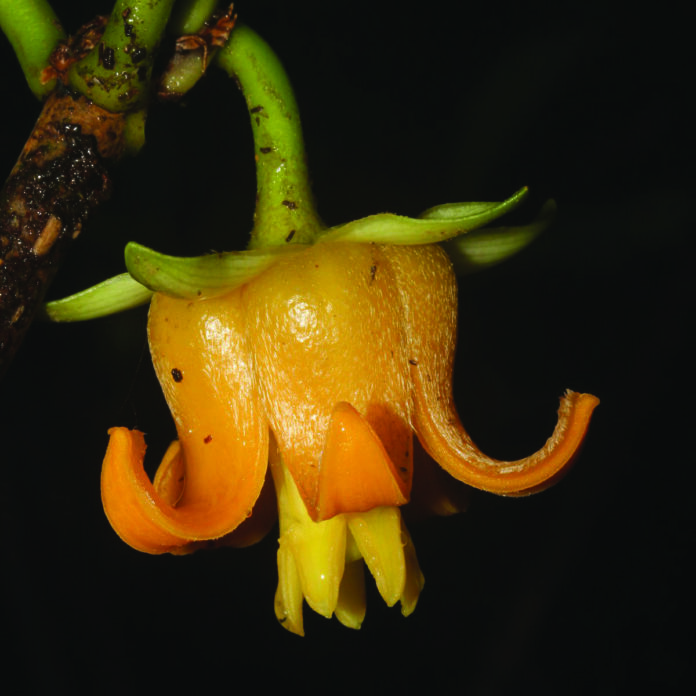For the past ten years, biologist Prishnee Bissessur has been studying the Rousseau creeper, an endemic plant in rapid decline, and has turned it into a real case study., to better understand and prioritize the threats to our flora. Prishnee defended her PhD last December at the University of Mauritius, and we contacted her on the eve of her departure for the European Tropical Ecology Conference in Lisbon. Dominique Bellier
The Rousseau creeper spreads its bright green foliage on the slopes of some Mauritian mountains. It blooms all year round, most generously from June to December. Unfortunately, since the 1930s, its range has been halved and its population has declined so rapidly that this plant, which was common in the 19th century, is now considered in danger of extinction, according to the criteria of the International Union for Conservation of Nature (IUCN).
In the 1930s, Octave Wiehé and Reginald Vaughan showed that this epiphytic liana – which grows on trees without parasitizing them – was widespread in high-altitude rainforests. But in 2005, Danish scientist Dennis Hansen counted only 90 individuals left! In 2017, Prishnee Bissessur published a systematic study of its current presence and distribution in the country, establishing the existence of 250 mature individuals spread over ten locations; the largest populations are located on Montagne du Pouce and Piton Savane. The Rousseau creeper lives mainly on mountain ridges and crater margins, within protected areas.
It may be called Roussea simplex, but unraveling its mysteries and understanding the reasons for its decline are not so simple! Dennis Hansen created a surprise when he showed that the blue-tailed day lizard(Phelsuma cepediana), our most beautiful gecko, was a pollinator – a rare and exclusively insular phenomenon. But using photographic traps, Prishnee Bissessur was able to demonstrate that her flower was mostly visited by birds, and that the Mauritius Bulbul, an endemic forest-dwelling grey robin, was the most assiduous and inclined to favor the transfer of pollen for fruiting. Alas, these observations also revealed that its yellow, fleshy, bell-shaped flowers also attract predators… such as monkeys and rats, who are also very fond of their nectar, while exotic black ants bring parasites that prevent them from flourishing.
But the first major threat to the survival of this slow-growing species comes from invasive exotic plants, which Prishnee Bissessur recommends eliminating as a priority, in a 2023 publication. Our researcher will not stop there, as she now intends to explore the genetic diversity of the Rousseau creeper, to determine the viability of its population.





